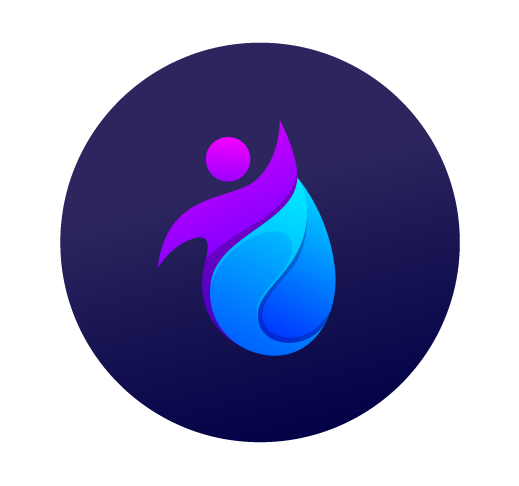You might stumble on a great job opening and feel eager to apply, yet skipping the step to research a company can lead to unexpected disappointments.
Candidates frequently overlook how learning about a company impacts their interview performance and confidence. Knowing the right details truly separates prepared applicants from the rest in competitive fields.
Explore this guide for proven ways to research a company, uncover critical insights, and apply with genuine certainty instead of guesswork or generic responses.
Pinpoint Relevant Information Quickly When You Begin Company Research
Locating up-to-date company information lets you tailor your application without guesswork. The right details help you speak confidently about the company’s mission and culture during interviews.
Start by visiting the employer’s official website and reading their About Us page. Real examples: “Our values focus on teamwork and creativity” or “We’re committed to customer-first solutions.”
Distinguish Between Mission Statements and Marketing Copy
Some candidates confuse mission statements with lofty brand slogans. A true mission statement describes the company’s long-term purpose compared to temporary campaigns or product ads.
For example, if you see, “We deliver digital solutions for small businesses,” that’s likely a mission. Compare narratives to spot which reflect company-wide priorities versus product features.
Tailor your application by referencing the mission’s specific words when discussing your fit. Try saying, “I believe in empowering customers,” if the mission uses similar language throughout.
Check Recent News Releases for Company Updates
News releases offer more than corporate announcements. Scan for new partnerships, executive changes, relocations, or products, since these events shape a company’s priorities and stability.
If you spot a press release about global expansion, reference it: “I admire your international initiative” shows you research a company thoroughly. Share one relevant news highlight in your interview response.
Use body language cues, like confident eye contact, when discussing recent achievements. It signals to the interviewer you’re not just informed—you’re invested.
| Source | Type of Info | Depth | Takeaway Action |
|---|---|---|---|
| Official Website | Mission, team, history | High | Note company values and recent milestones in a dedicated document |
| Press Releases | Strategic changes | Medium | Cite a recent achievement in your cover letter |
| Glassdoor/Indeed | Employee feedback | Varies | Identify trends in culture or management style to discuss in interviews |
| Leadership, recent hires | High | Follow key people and note shared connections | |
| Industry Publications | Market trends | Medium | Connect your industry understanding to company strategy in your application |
Find Insider Perspectives Using Public Platforms
Reading current and former employee perspectives exposes deeper company realities than marketing pages alone. Use reputable review sites to get authentic feedback on leadership and culture.
Look for repeated themes in reviews rather than single negative comments. If ten employees mention mentorship, that suggests a real focus—not just PR spin. Avoid relying solely on one source.
Identify Recurring Cultural Strengths and Weaknesses
Organize notes on common feedback you see, like, “Supportive management but limited advancement opportunities.” Patterns like this help you decide if you’ll thrive or clash with the workplace.
If multiple people mention career growth, prep questions like, “What internal mobility opportunities most excite employees here?” It shows you research a company deeply and seek growth.
- Collect reviews to spot common strengths or frustrations, not just extremes, so your questions for HR appear balanced and well-informed.
- Track leadership names and styles so you can say, “I’m inspired by your CEO’s open-door policy.” That specificity signals effort to hiring managers.
- Compare departments using reviews when possible, since a positive finance culture doesn’t always reflect other teams’ realities.
- Write a pro/con list based on review themes and refer to it to decide whether to pursue the position after your interview.
- Practice responses referencing what you’ve learned, such as, “Reviews mention collaborative training—can you share how that shapes onboarding here?”
Recognizing these perspectives adds credibility to your application—interviewers know when you’ve done the work.
Assess Management and Leadership Dynamics
Glassdoor, Indeed, and LinkedIn can reveal leadership turnover or team restructuring. Note upward mobility stories from real employees or named managers in profiles.
Find leadership bios and connect performance reviews to their stated styles. If an executive highlights transparency and it matches reviews, that’s a consistent, positive culture.
- Follow senior staff on LinkedIn for updates and context to mention in interviews, like recent blog posts or webinars hosted by leadership.
- Track leadership quotes across platforms and reference them: “I was inspired by your COO’s comment on innovation.” This targeted mention builds rapport.
- Save standout stories related to promotions or mentorship and use them as talking points to support your values during interviews.
- Create a one-pager noting each leader’s management style to decide if the environment matches your preferences and strengths.
- Prioritize information about leadership culture in your own ranking system when weighing multiple job options.
Evaluating management helps you aim for teams where you’ll feel aligned long-term and able to grow your career.
Analyze Company Reputation in Industry Circles
Understanding industry reputation gives you leverage in interviews and negotiation. Research a company’s market standing to answer why you want to work there with evidence-based points.
Don’t treat rankings or awards as vague prestige. Instead, note specific achievements—like Top Innovator in AI 2023—and connect them to the company’s business goals and talent strengths.
Dissect Awards and Industry Rankings by Criteria
Not all awards are equal. Scrutinize selection criteria and frequency: annual innovation rankings say more than single PR-driven recognitions with unclear standards.
Record which awards reflect actual business outcomes. For example, explain in your cover letter, “As a recipient of Best Place to Work for Millennials, your values match my career ambitions.”
Use public statements about award wins to structure your response to, “Why are you applying here?” citing ongoing achievement, not just a one-time win.
Compare Competitors’ Market Perceptions
Study competitor companies for narratives about innovation, growth, or talent retention. Note contrasts and reference these points when explaining why this company stands out.
For example, “Company X leads in new tech while Company Y’s turnover stresses culture.” Integrate those findings to personalize your answer to, “Why us?”—not just, “I’m interested in you.”
Cite industry publications to back up your points for extra credibility—hiring managers value applicants who research a company with context wider than just one business.
Spot Workplace Fit Signals That Match Your Values
Seek verification that company values and policies actually play out for employees. Reading diversity statements or community involvement updates can reveal the depth of a firm’s commitments.
If their careers page highlights flexible work but reviews imply long overtime, you’ll want to clarify expectations in your interview before accepting a role.
Analyze Social Media for Active Employee Engagement
Someone who research a company through LinkedIn, Twitter, or Instagram can check employee spotlights and real office photos. Lively posts—like team outings—verify culture points beyond words.
Rely on signals like employee likes or comments on posts, not just employer-driven content, to determine authentic engagement. Note recurring themes, such as work anniversaries or project wins.
List one or two posts as examples in your interview. For example, refer to posts celebrating team milestones to show you care about culture consistency, not just policy statements.
Scrutinize Benefits Stories and Policy Mentions
Review benefits summaries online and match them with employee anecdotes on forums or review sites. This step ensures stated perks actually reach team members in meaningful ways.
Identify patterns between stated values and policy outcomes. If many reviews praise work-life balance benefits, that’s powerful evidence to prioritize in your acceptance criteria.
Reference both the careers page and review details in your application. For example: “Employee testimonials on flexible schedules align perfectly with my preferred work style.”
Craft Tailored Application Materials That Stand Out
Building a resume and cover letter with specific company highlights moves your application to the top of the pile. Personalization proves you research a company beyond generic statements.
Try reflecting their mission verbatim in your cover letter where appropriate. Avoid copying—blend a key phrase with your own background for authentic, memorable responses to anticipated questions.
Integrate Company Values into Your Experience Stories
Recount a relevant project or outcome from your past roles that speaks directly to the target company’s priorities—such as innovation or customer service excellence featured on their website.
State clearly, “I achieved similar goals by,” followed by your outcome. This places your success within their preferred context, making your fit unmistakable to hiring managers.
Practice saying aloud, “I see your company values resilience; in my last team, I led a similar complex project,” to make your stories sound natural in interviews.
Phrase Interview Questions Using Research Insights
Prepare at least two questions referencing company growth, values, or leadership changes cited on their site or in the press. This demonstrates you research a company with intention.
Example 1: “Your recent partnership with OrgABC stood out. How will that shift team priorities?” Example 2: “Last month’s community event—what sparked that initiative?”
This question style positions you as engaged, detail-focused, and motivated to add value right away.
Track All Research Findings for Confident Decision-Making
Document your research process for each company before applying. Create a standardized tracking file listing your findings, sources, and unresolved questions.
Dedicate columns to key categories: mission statement, leadership, culture, recent news, benefits, and reputation. Assign a confidence score from 1–5 about how well you understand each.
Maintain a Consistent Research Template
Create a simple Word or Google Sheet template with the categories above. Add notes as you gather insights from various platforms and interviews. Refine this as you gain experience.
Mark completed items and flag missing info so you know which topics to address in your next round of company research or interviews.
Analyze your research log after each cycle. Adjust your focus—if culture mismatches keep coming up, refine your approach for next applications.
Review Your Final Job Fit and Readiness
Use your scored research file to weigh pros and cons before accepting offers. Ask, “Does this company align with my values, personality, and goals?” Give yourself at least a day to reflect.
Base your job acceptance on your holistic research, not just excitement from one positive conversation. This protects you from short-term impulses that overlook real risks.
Commit to updating your research approach with every application cycle as the market and your preferences evolve.
Apply Research-Driven Insights for Stronger Job Outcomes
Successful job seekers make research a company part of every application step. Begin with the basics, then layer on insights from current employees, market perception, and values alignment.
Using a detailed template lets you compare companies objectively and respond with confidence in interviews. Your application signals dedication and sharp insight, setting you apart from generic candidates.
Choose roles where your values and strengths meet genuine opportunity. Doing your research with purpose ensures every job move is a step forward, both professionally and personally.



